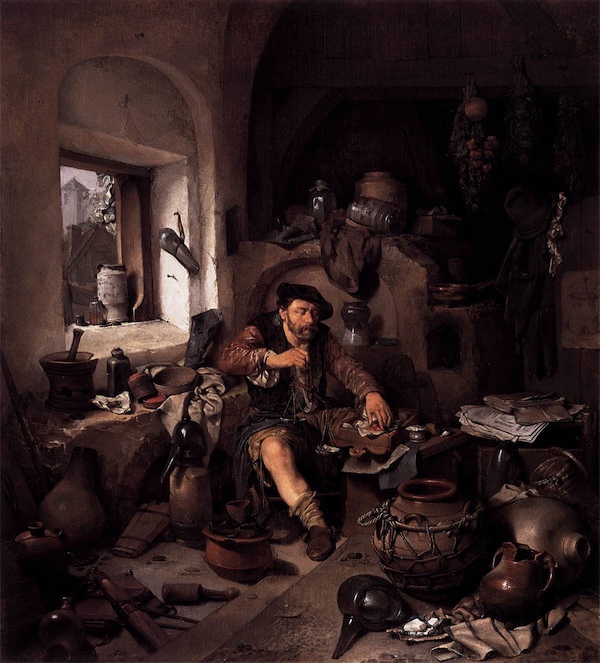
Il mondo è il libro dove il Senno Eterno
scrisse i proprii concetti, e vivo tempio
dove, pingendo i gesti e ‘l proprio esempio,
di statue vive ornò l’imo e ‘l superno;
perch’ogni spirto qui l’arte e ‘l governo
leggere e contemplar, per non farsi empio,
debba, e dir possa: – Io l’universo adempio,
Dio contemplando a tutte cose interno. –
Ma noi, strette alme a’ libri e tempii morti,
copiati dal vivo con più errori,
gli anteponghiamo a magistero tale.
O pene, del fallir fatene accorti,
liti, ignoranze, fatiche e dolori:
deh, torniamo, per Dio, all’originale!
The world’s the book where the eternal Sense
Wrote his own thoughts; the living temple where,
Painting his very self, with figures fair
He filled the whole immense circumference.
Here then should each man read, and gazing find
Both how to live and govern, and beware
Of godlessness; and, seeing God all-where,
Be bold to grasp the universal mind.
But we tied down to books and temples dead,
Copied with countless errors from the life, –
These nobler than that school sublime we call.
O may our senseless souls at length be led
To truth by pain, grief, anguish, trouble, strife!
Turn we to read the one original!
—Tommaso Campanella, Modo di filosofare (ca. 1620) (J.A. Symonds transl. 1899)
This sonnet by Galileo’s contemporary and fervent defender, Tommaso Campanella, is clearly derived from a reading of some of the great astronomer’s texts that I discussed yesterday about how to “read” the “book of nature,” and can easily be understood through reference to them.
Listen to the Sonata Quarta of Johann Heinrich Schmelzer, from his Sonatae unarum fidium (1664) and then to a brief excerpt from his sonata marking the relief of the Turkish siege of Vienna, Victori der Christen (1683). Schmelzer was an Austrian composer who wrote in the stylus fantasticus that had been pioneered by Giorlamo Frescobaldi a generation earlier and carried north of the Alps by Frescobaldi’s student Johann Jakob Froberger. The son of an army officer, Schmelzer grew up with first-hand experience of the religious wars that plagued Middle Europe in the first half of the seventeenth century. The experience is said to have helped shape his introspective style which stresses the pursuit of a highly personalized vision of harmony. Athanasius Kircher, the great Baroque polymath who sought to develop Galileo’s ideas about the possibility of a universal language, was fascinated by the stylus fantasticus. Here is how he described it: “It is especially suited to instruments. It is the most free and unrestrained method of composing, it is bound to nothing, neither to any words nor to a melodic subject, it was instituted to display genius and to teach the hidden design of harmony and the ingenious composition of harmonic phrases and fugues.” The style found some of its best expression in Schmelzer’s work.



